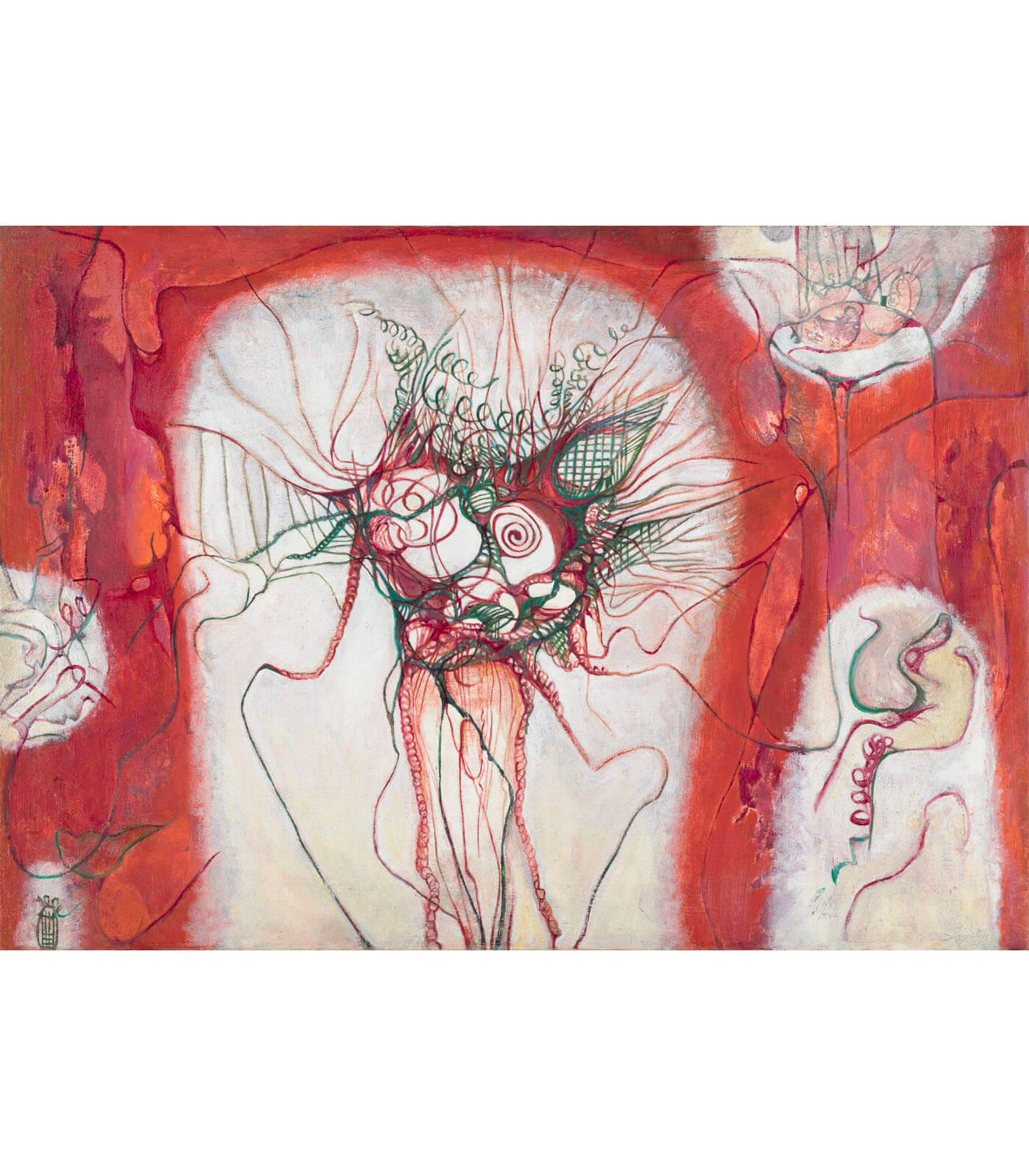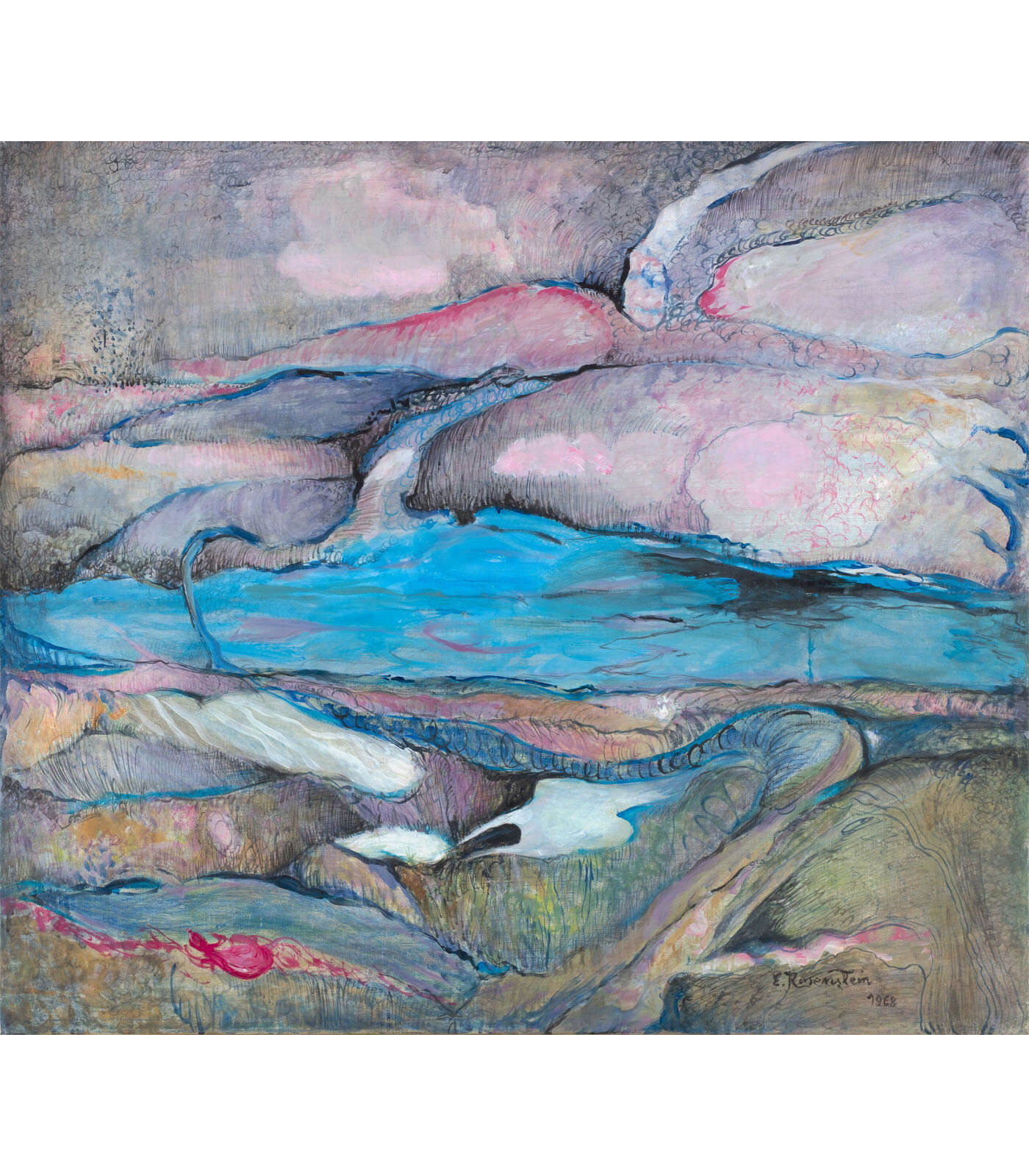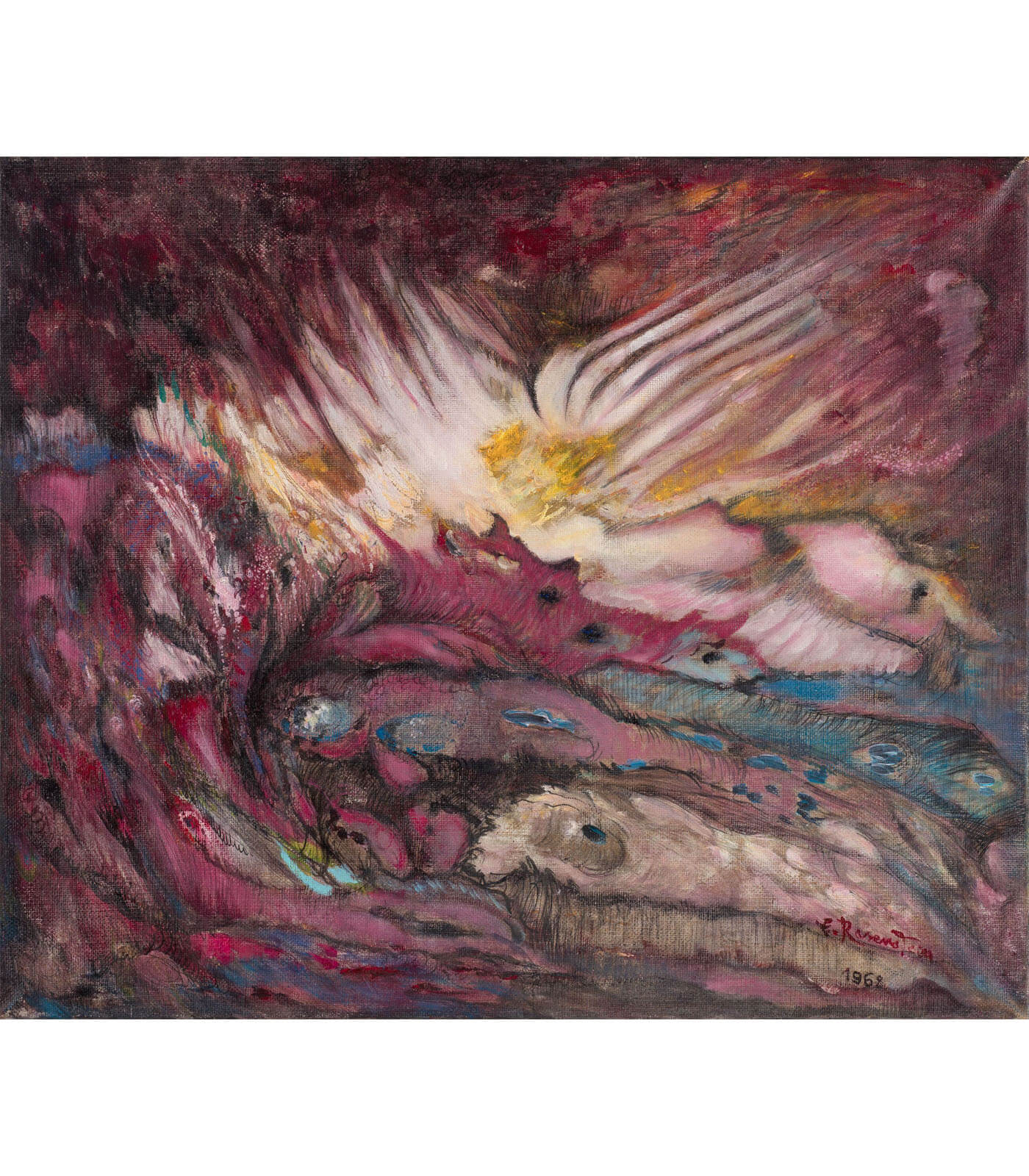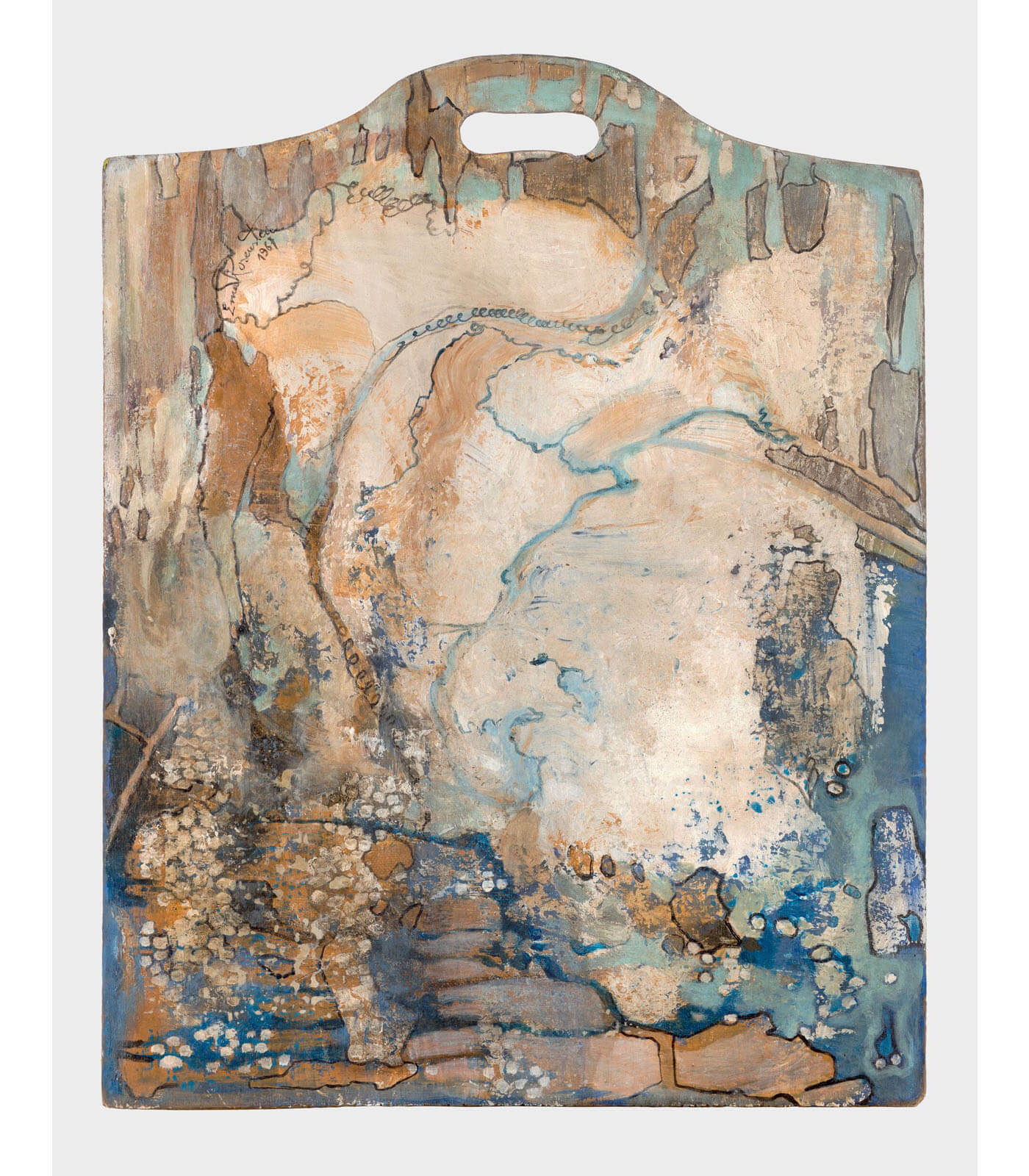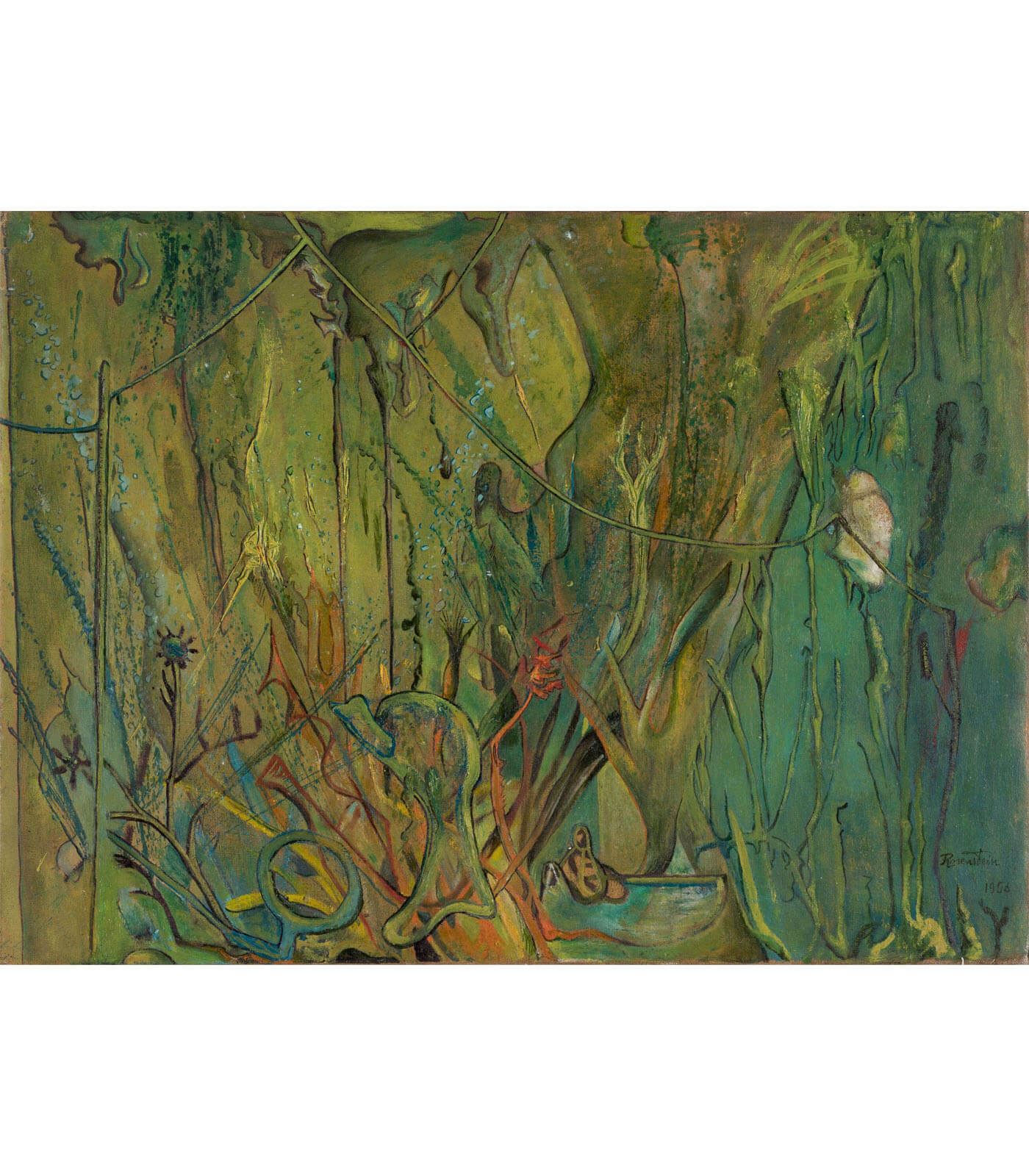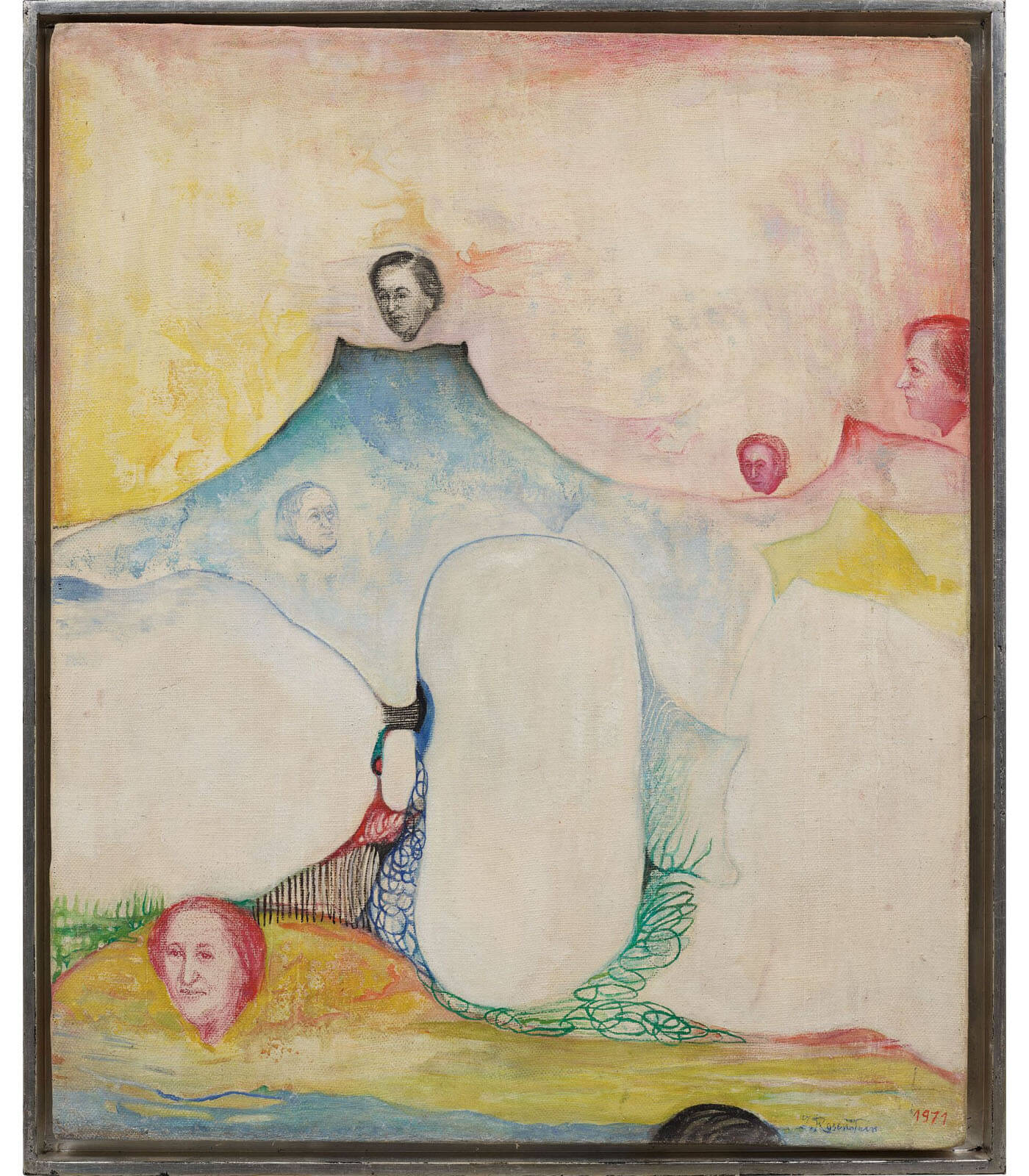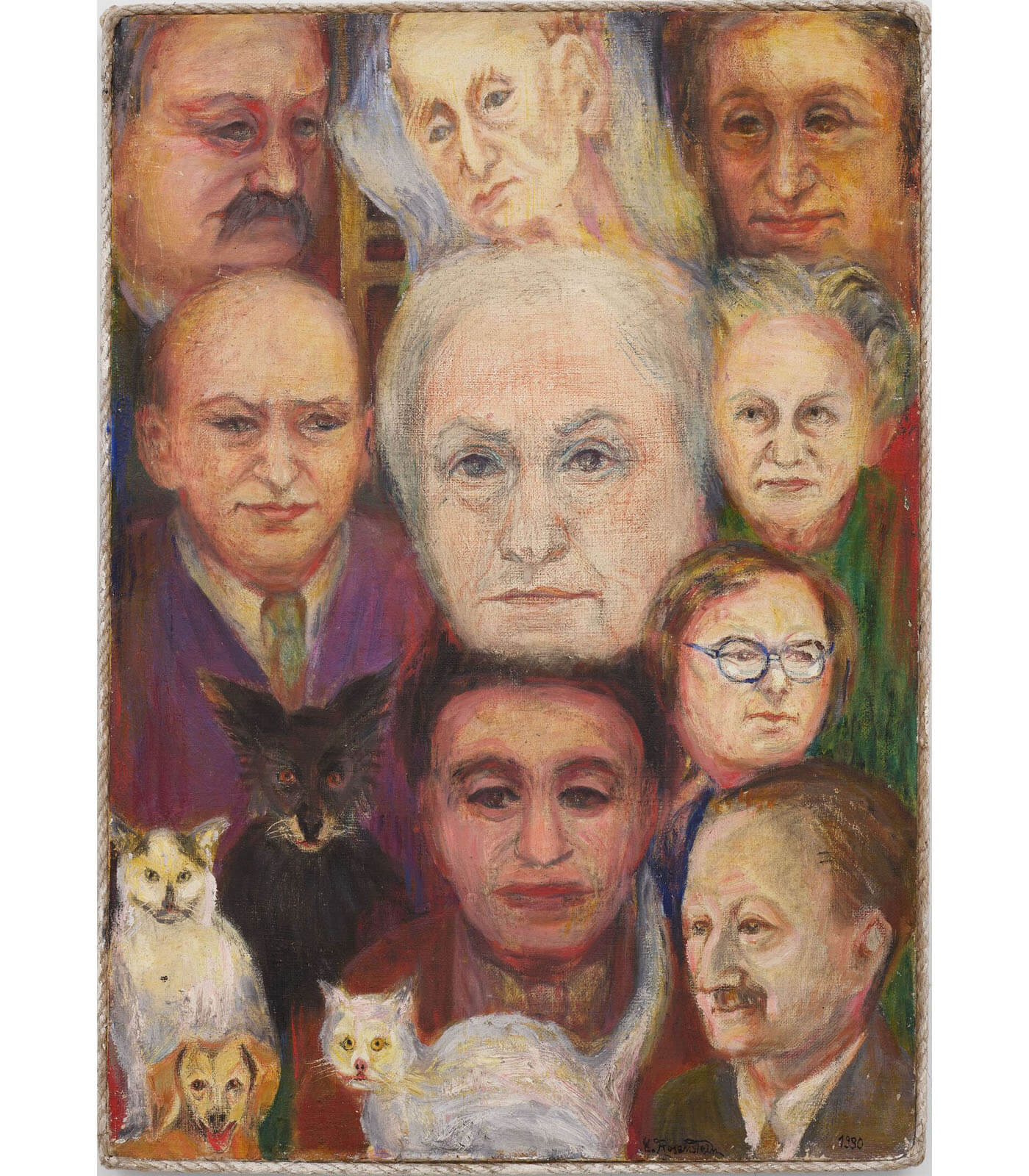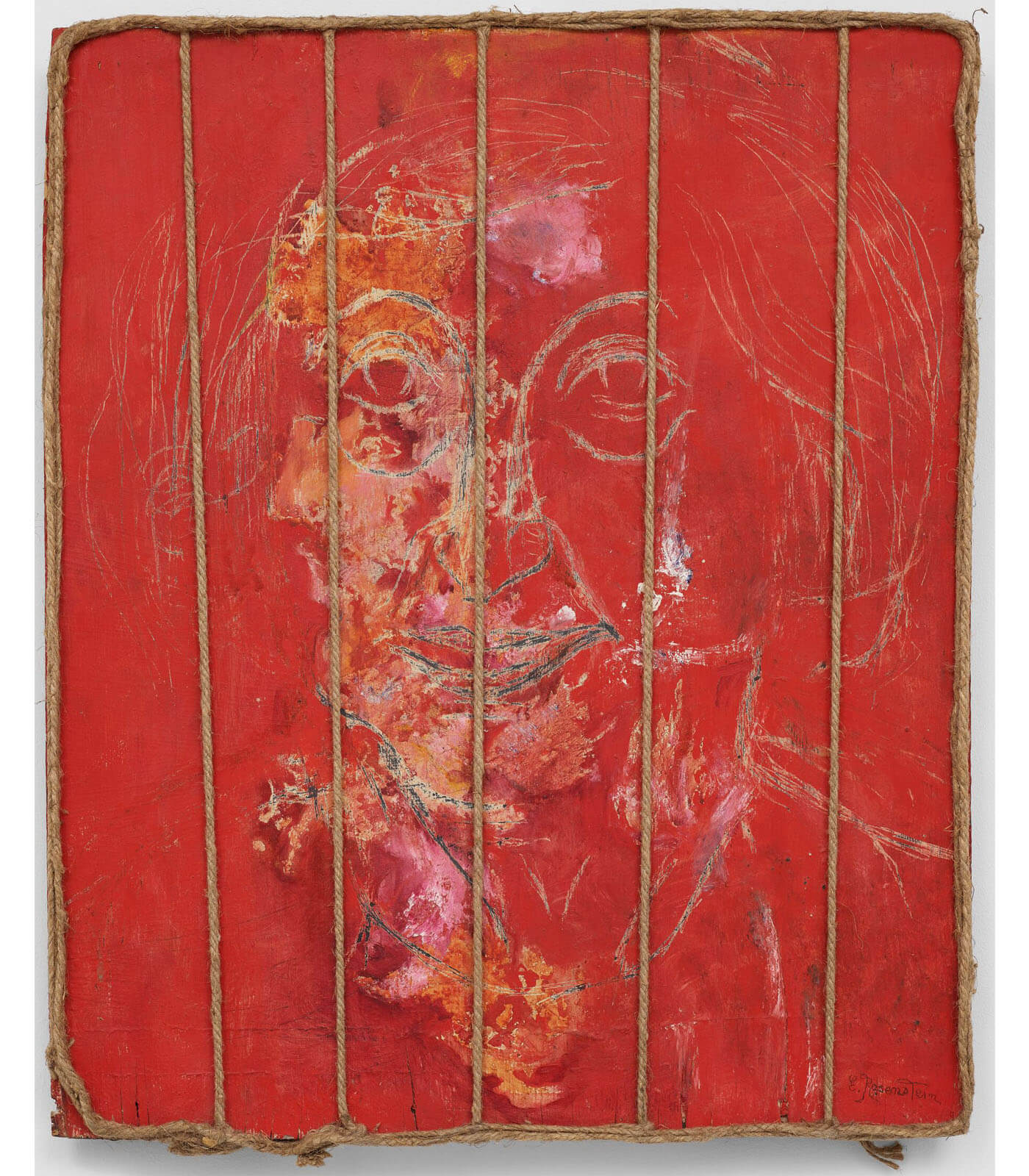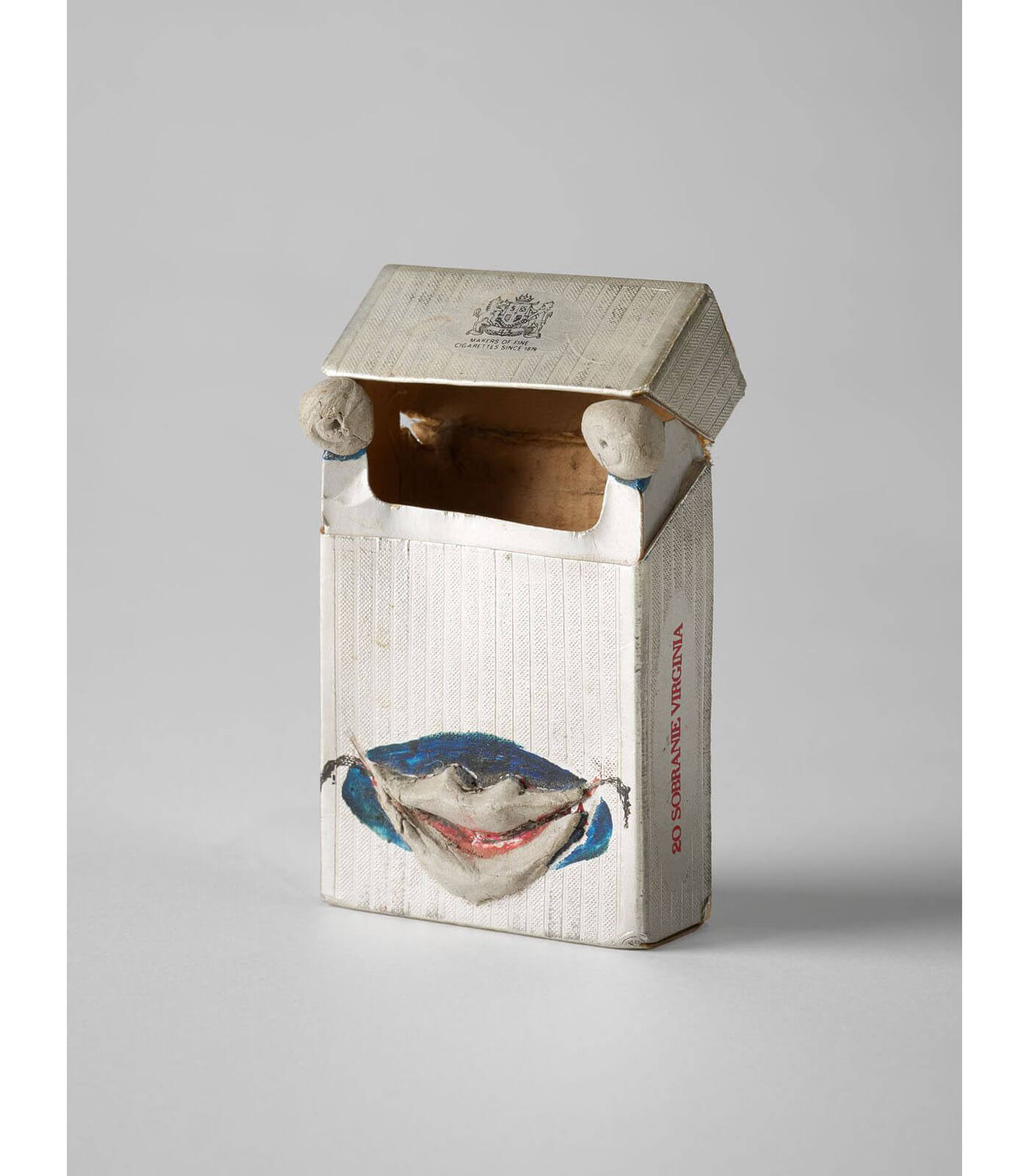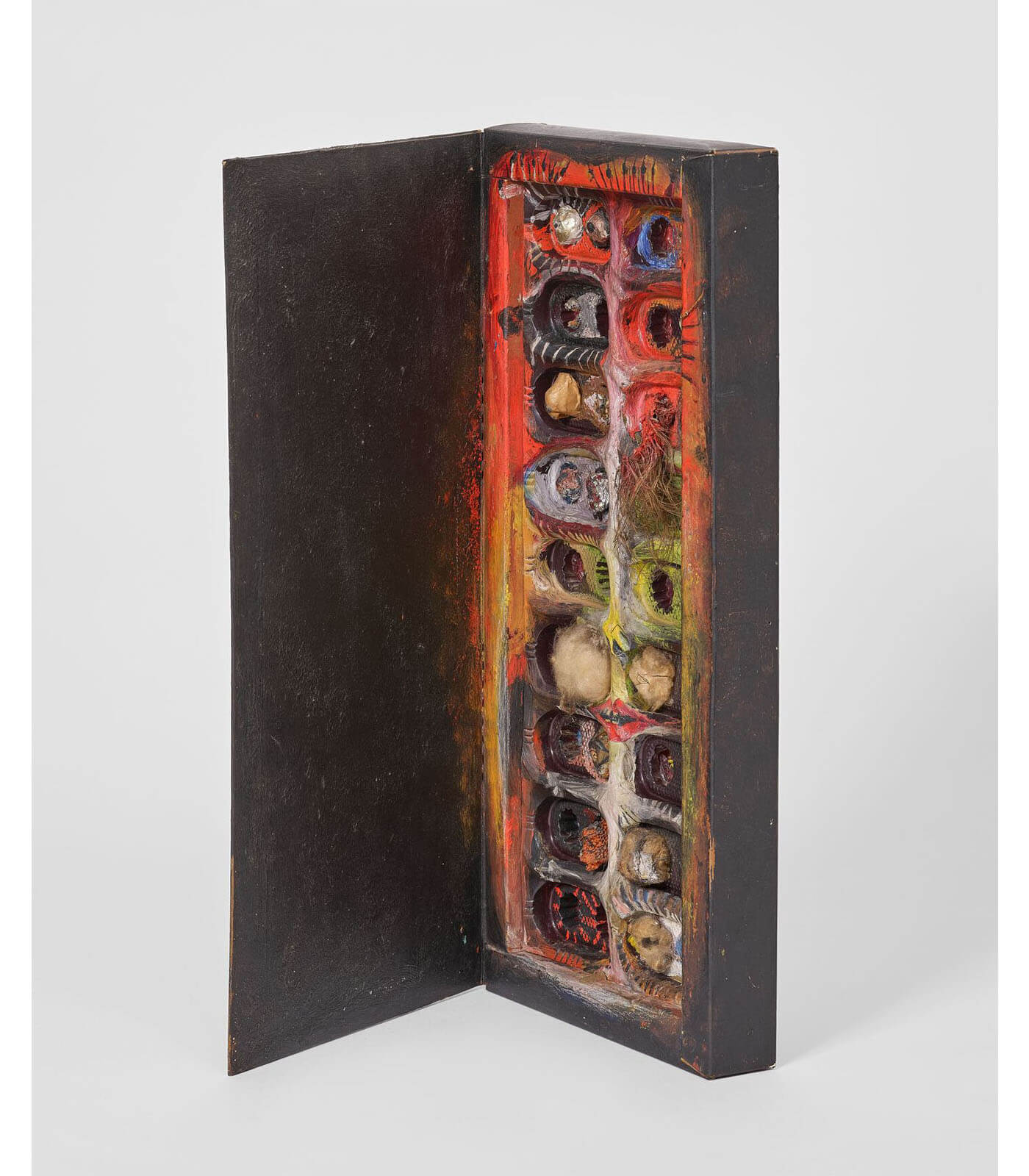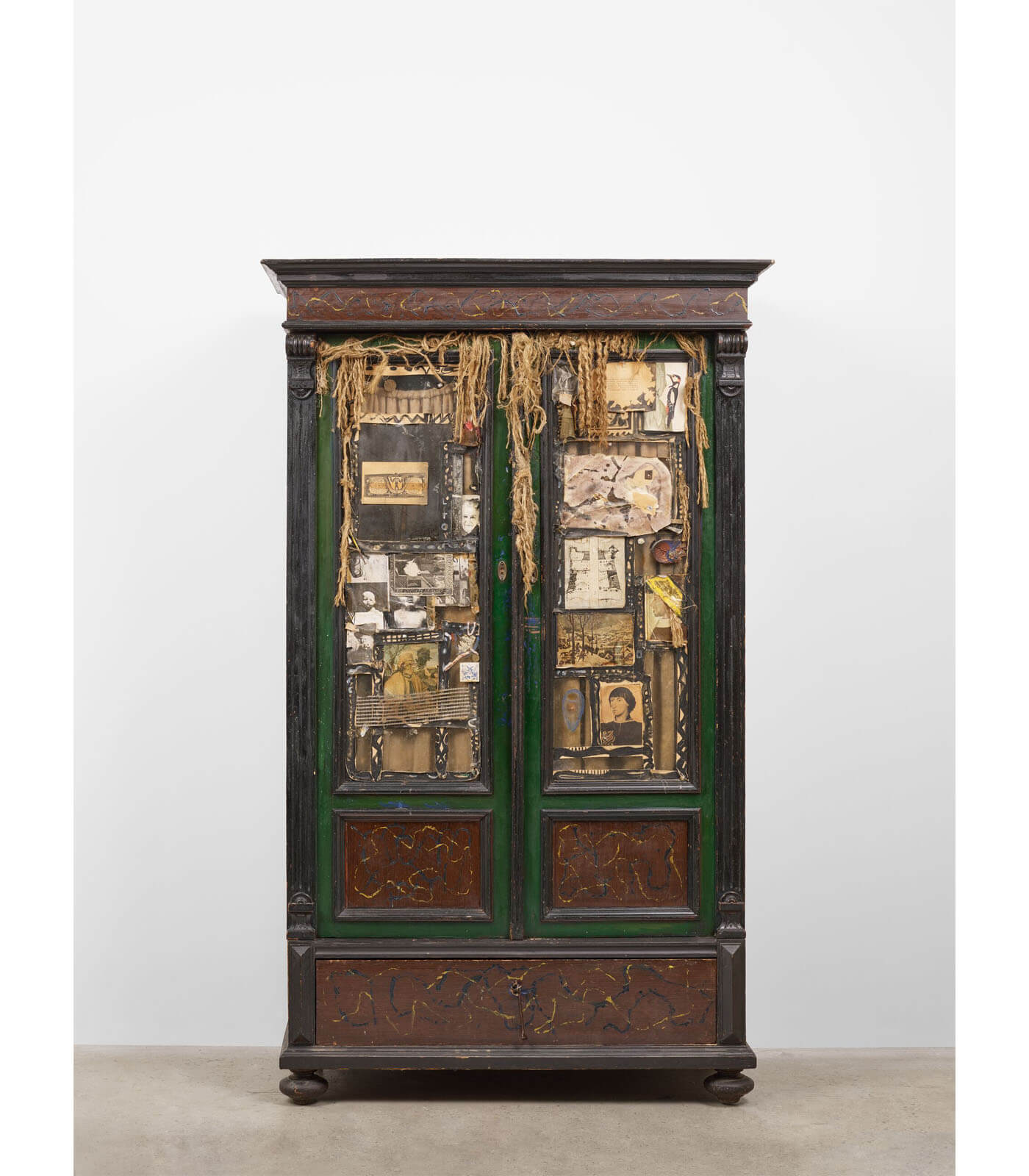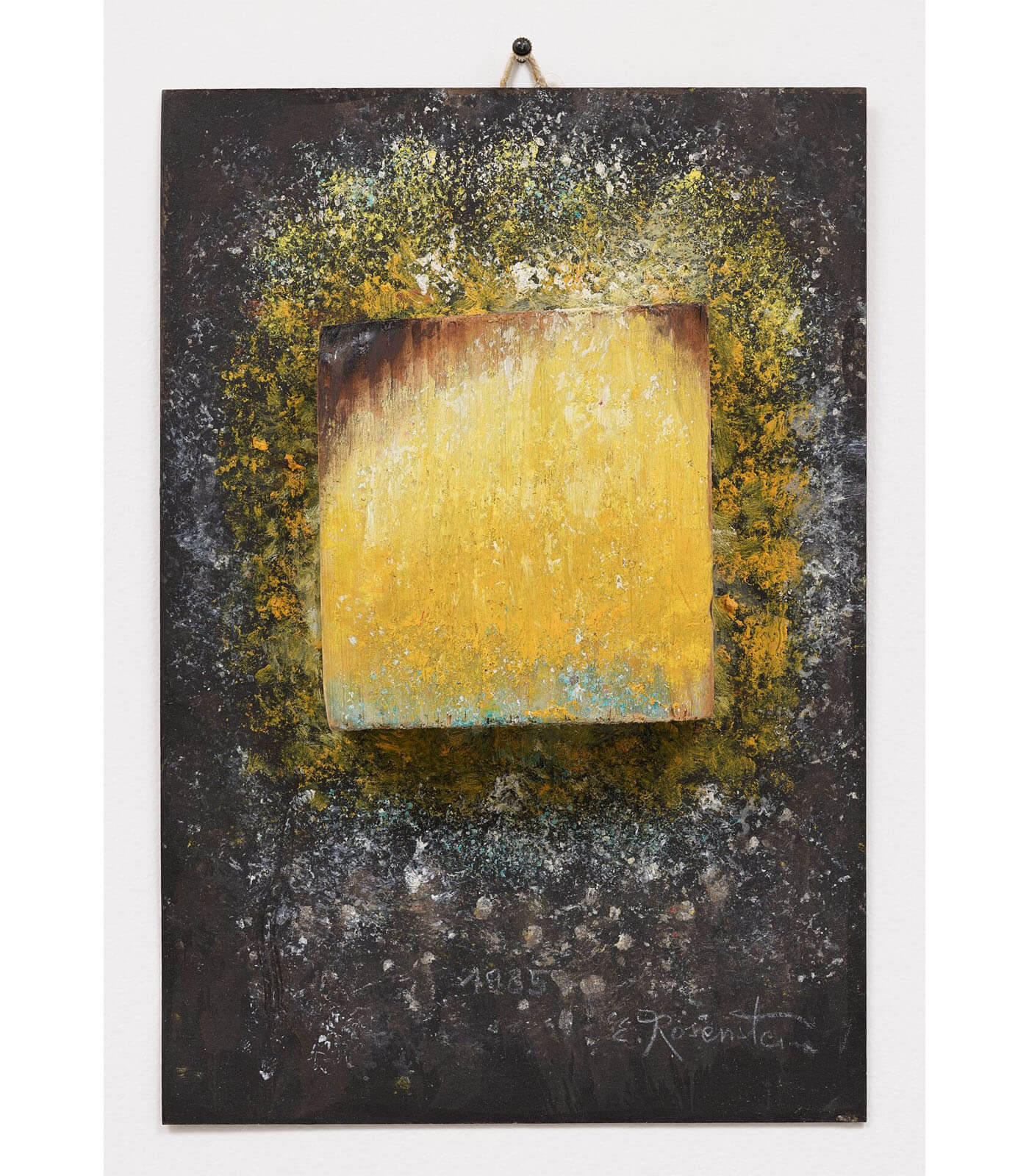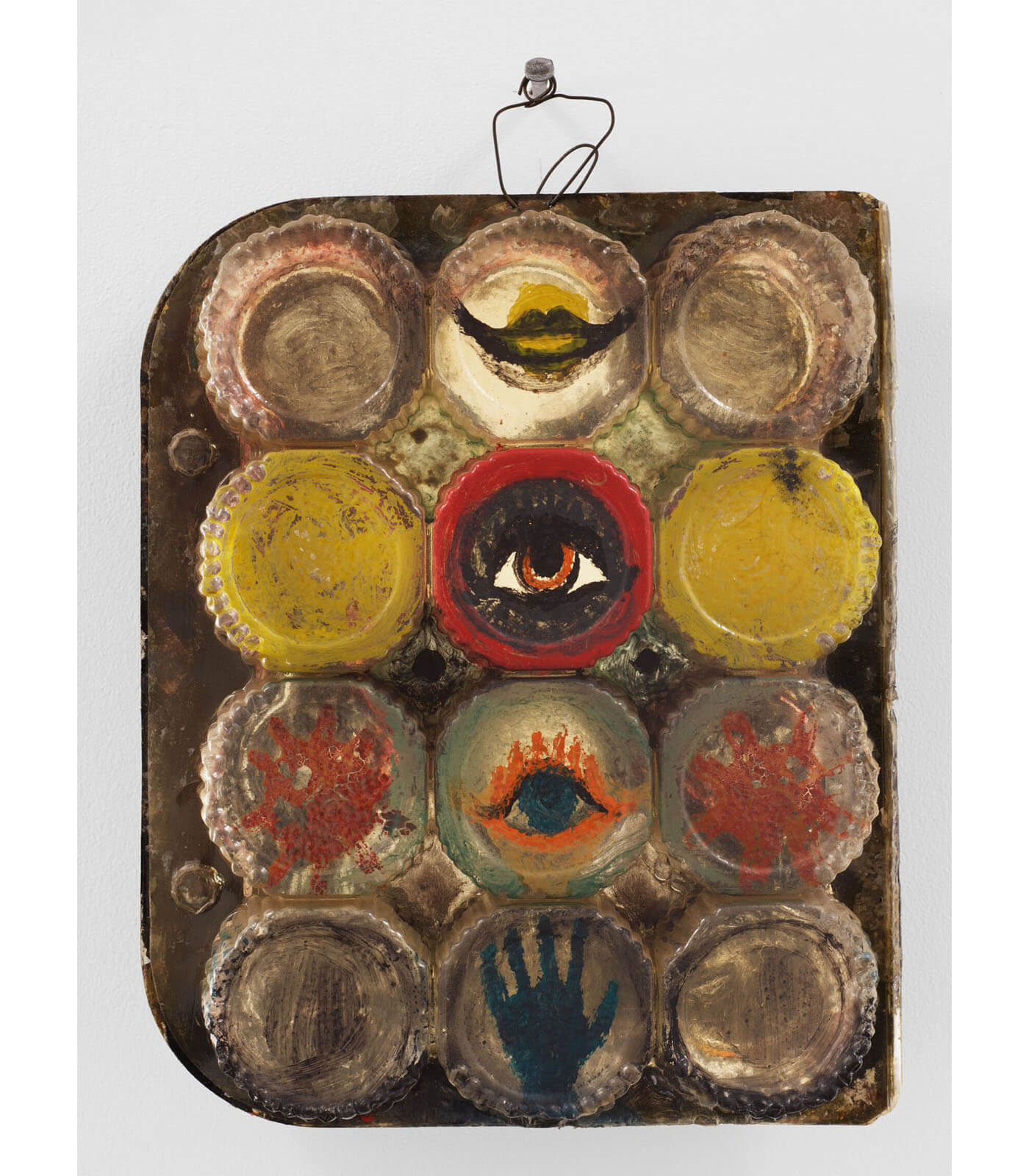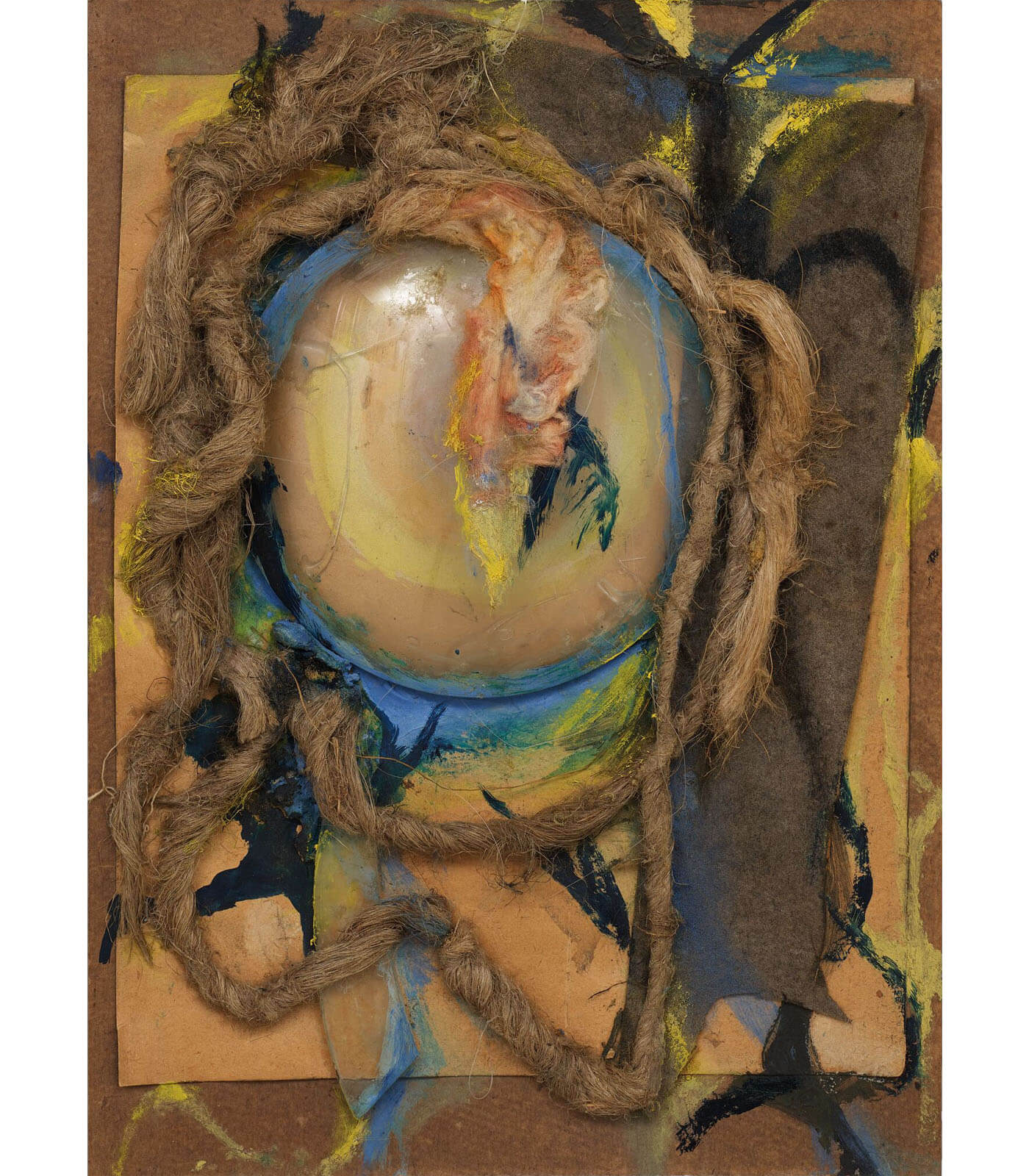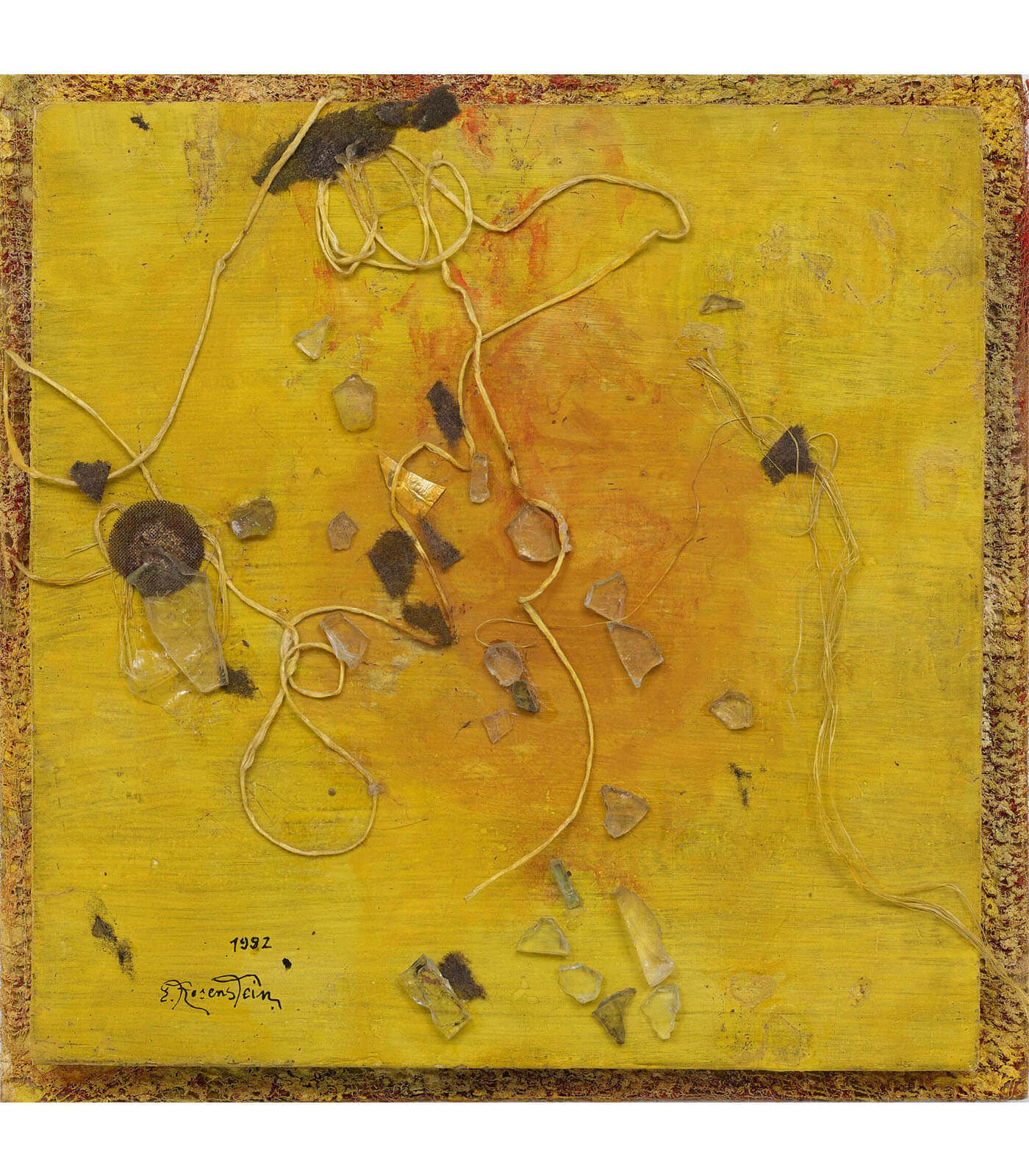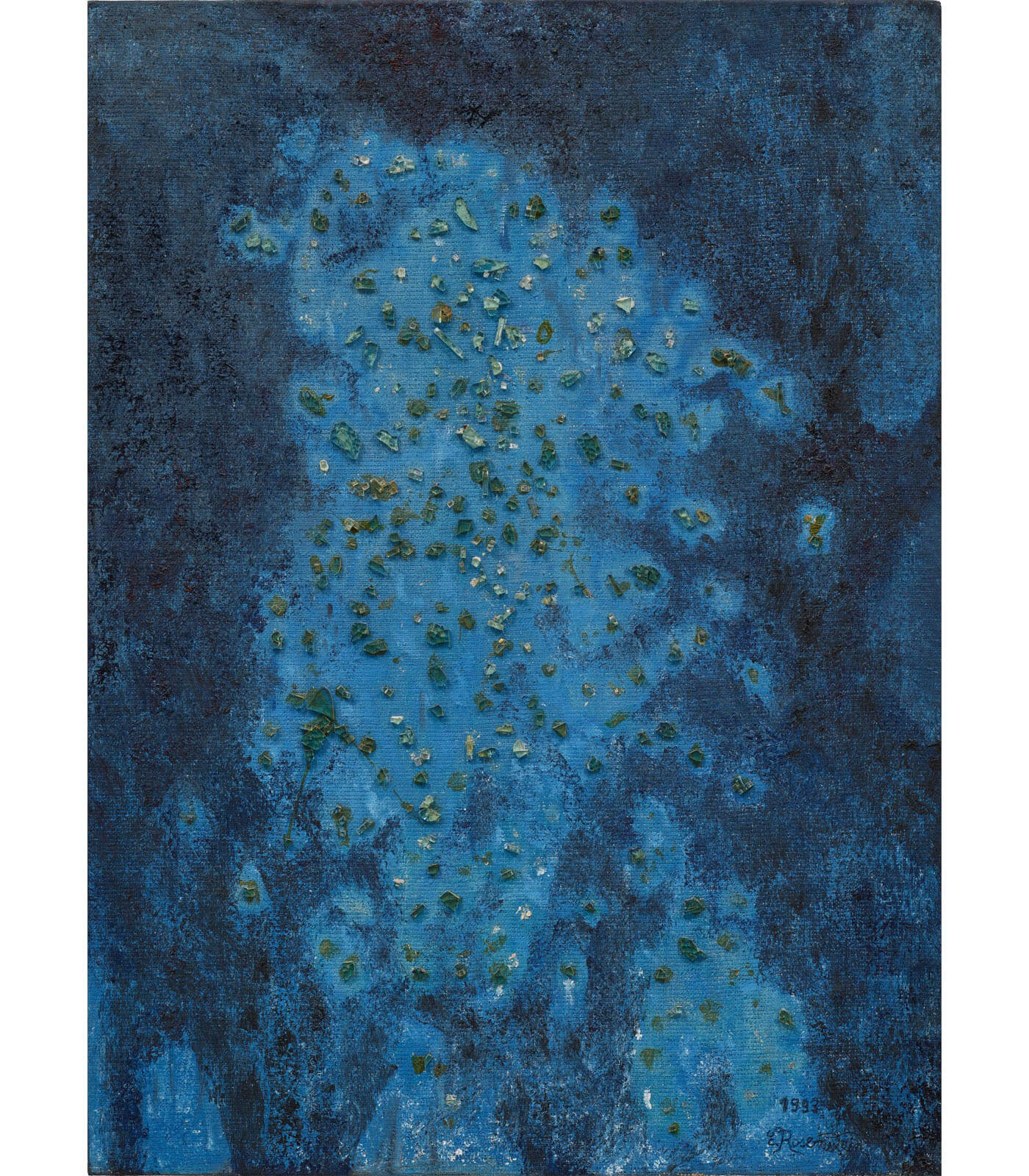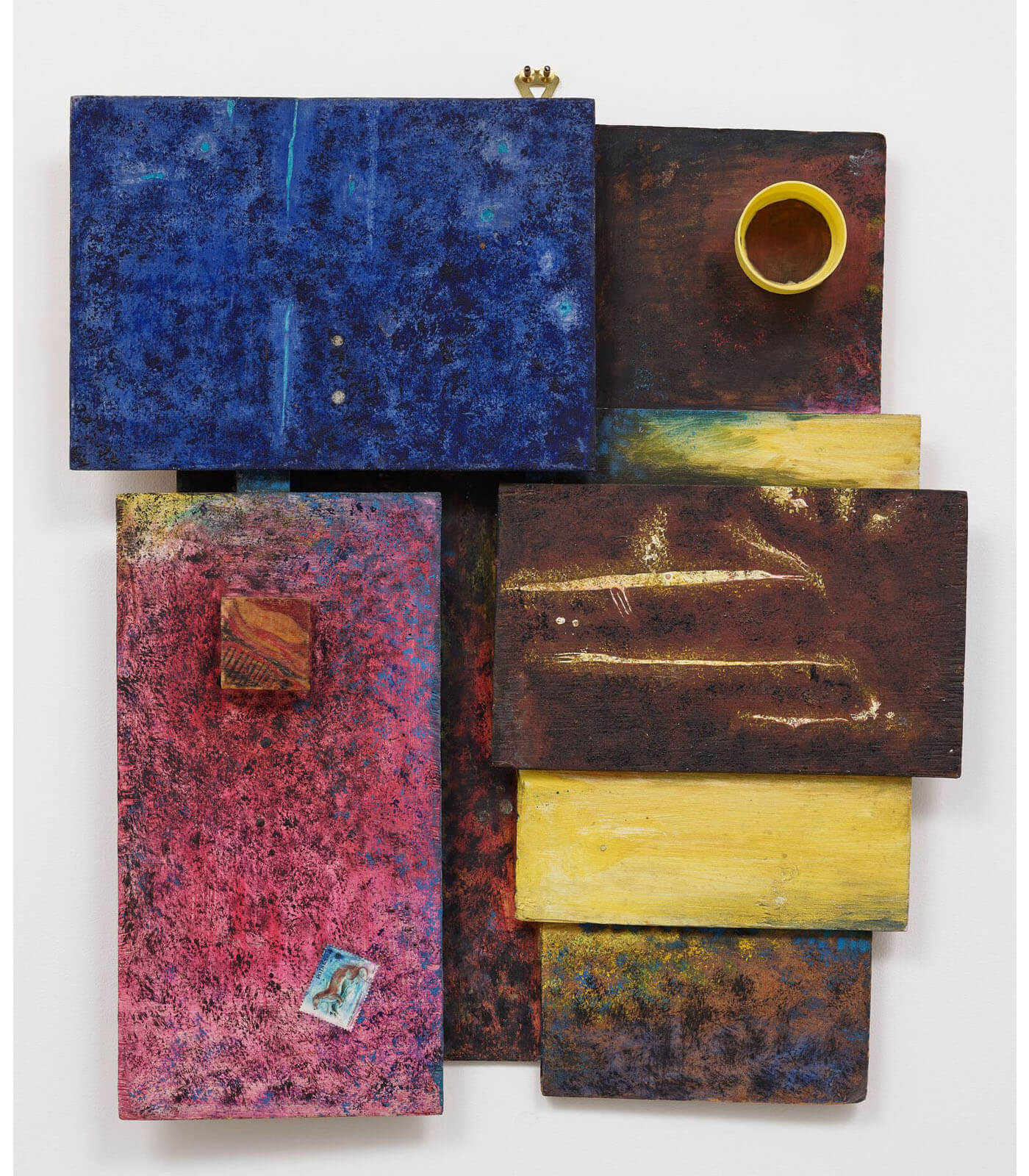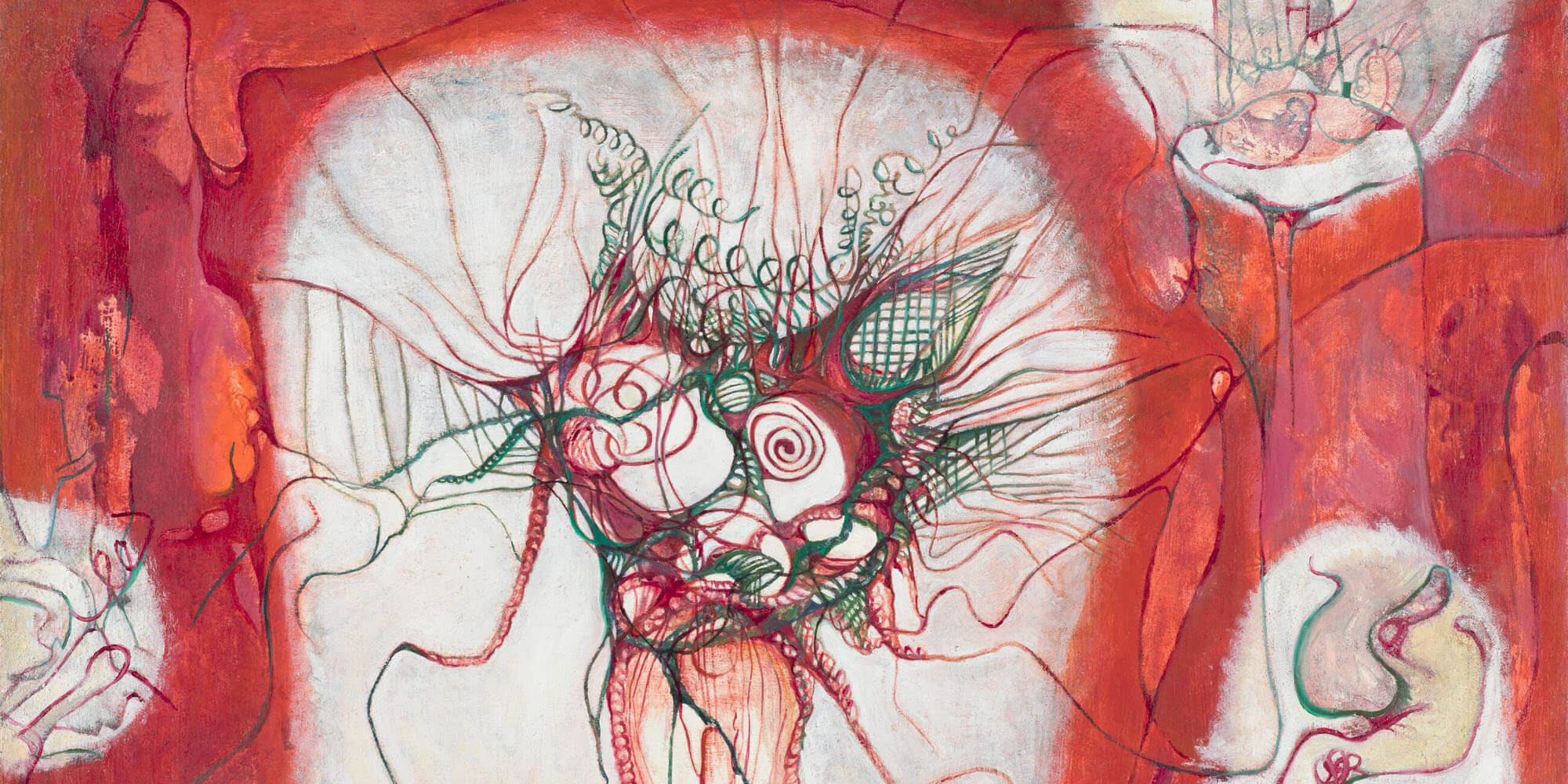
Erna Rosenstein
2 September 2022 – 14 January 2023
Zurich, Limmatstrasse
‘Painting is something that is inherent in me, but at the same time, I can feel that some elements of the world flow through me and I only make them real. It comes from the world; it is part of my transformed memories, but also from the smell of the air at the moment, the swing of the leaves, the road traffic. Everything flows through me and brings something out. Maybe these are some faraway echoes or astral matters. I don’t know. I am thus only a tool transmitting in my own way. It will like drawing ink, a drawing pen, oil paint, distemper or the like.’—Erna Rosenstein
This September, Hauser & Wirth Zurich, Limmatstrasse presents ‘Erna Rosenstein’, the first major presentation in Europe outside of Poland devoted to the iconoclastic artist (1913 – 2004). Rosenstein’s wartime survival, commitment to Surrealism and lifelong adherence to leftist ideologies course through the visual language of her paintings, drawings and assemblage sculptures, as well as poems, diaristic writings and deceptively whimsical children’s stories. Steeped in an extraordinary personal history and responding to traumas suffered in the Holocaust and the postwar sociopolitical upheaval of her native country, the art of Erna Rosenstein defies simple classification.
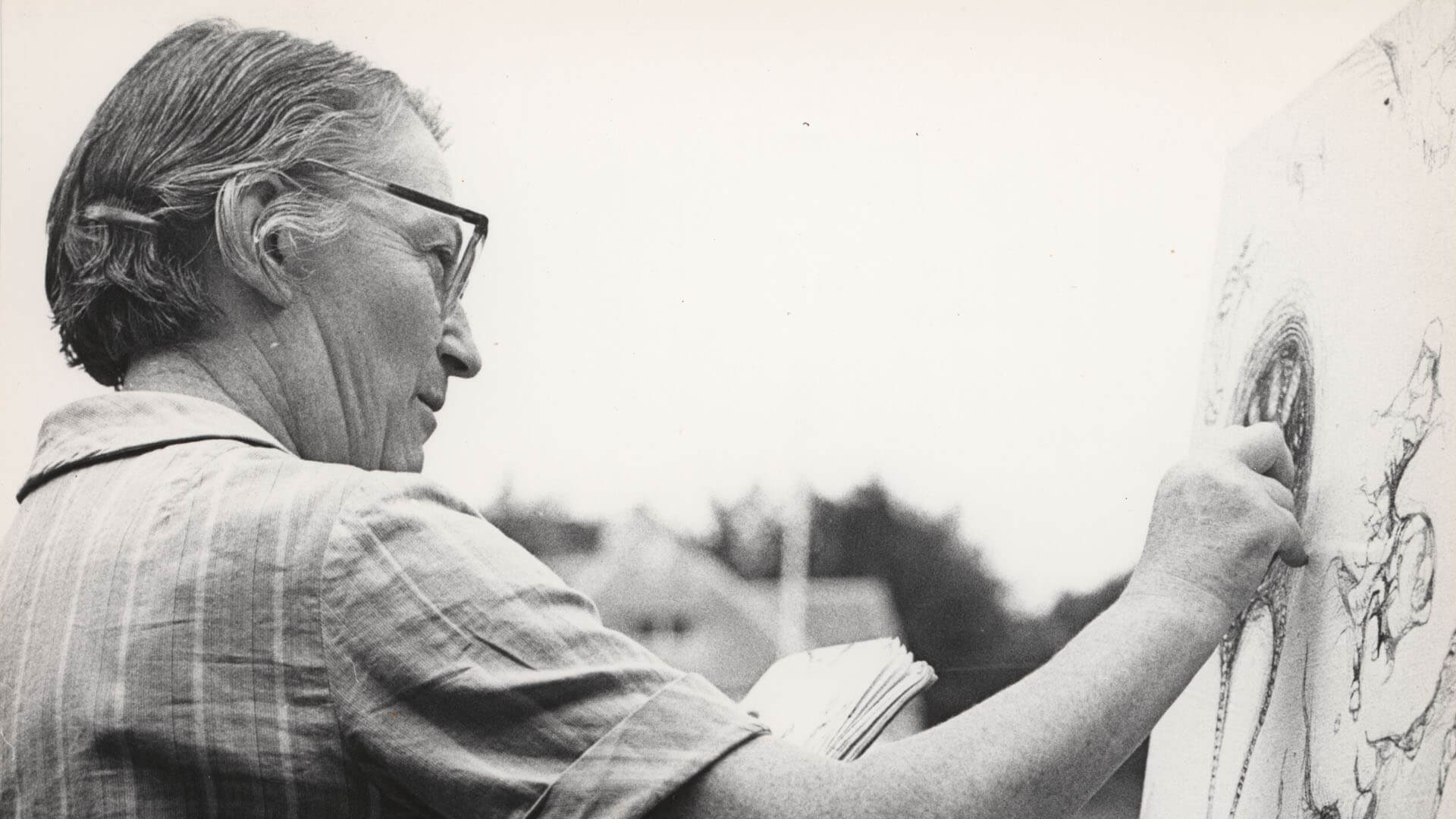
Erna Rosenstein’s six-decade career was fueled by the formation of prewar artistic, intellectual and political affiliations, and is expressed in a constant oscillation between autobiographical figuration and biomorphic abstraction. While Rosenstein produced artworks in the prewar period, nothing survived the war; instead, she filtered the memories of her early life through fantastical stories and enchanting visual landscapes. Grappling with themes of memory, trauma, longing and loss, she used paint, ink and found materials to suggest a world tinged with allegory, enchantment and fairytale. ‘Erna Rosenstein’ brings together fifty works, including works from the Estate of Erna Rosenstein, that will be exhibited publicly for the first time since the artist’s death in 2004, generously loaned by her son Adam Sandauer.
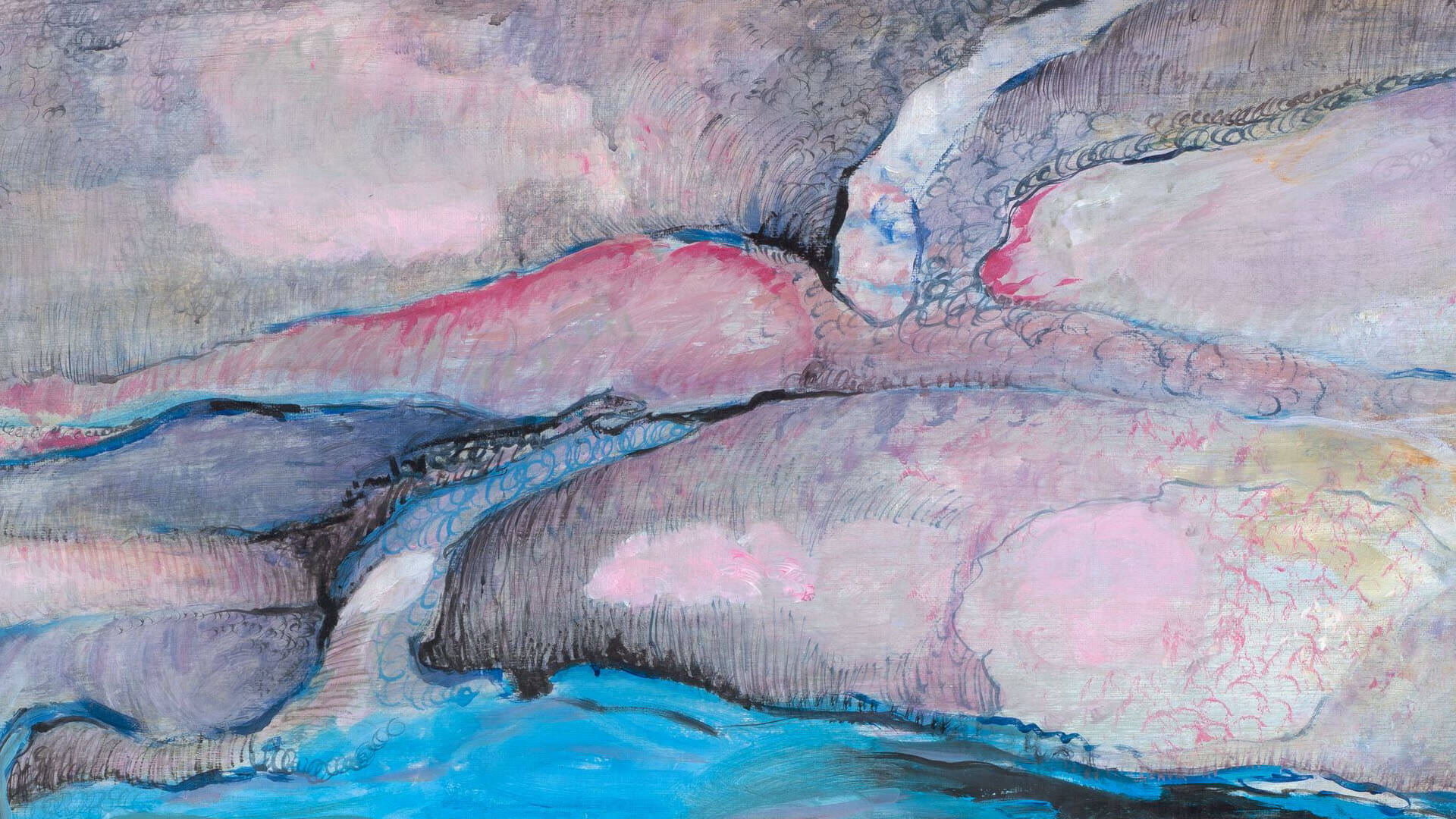
Abstract paintings dating from the early 1950s to the end of the 1970s showcase the intense focus of those two decades of her practice and reflect the political and personal turmoil of those years. ‘Poświata (Afterglow)’ (1968) depicts a babbling brook running down from the valleys and rolling hills of a pastel landscape rendered in billowing pinks and citron greens, while ‘Kwiaty piekła (Hell Flowers)’ (1968) is saturated with bodily reds in which biological forms vibrate, conjuring the sensations of nerves or internal organs.
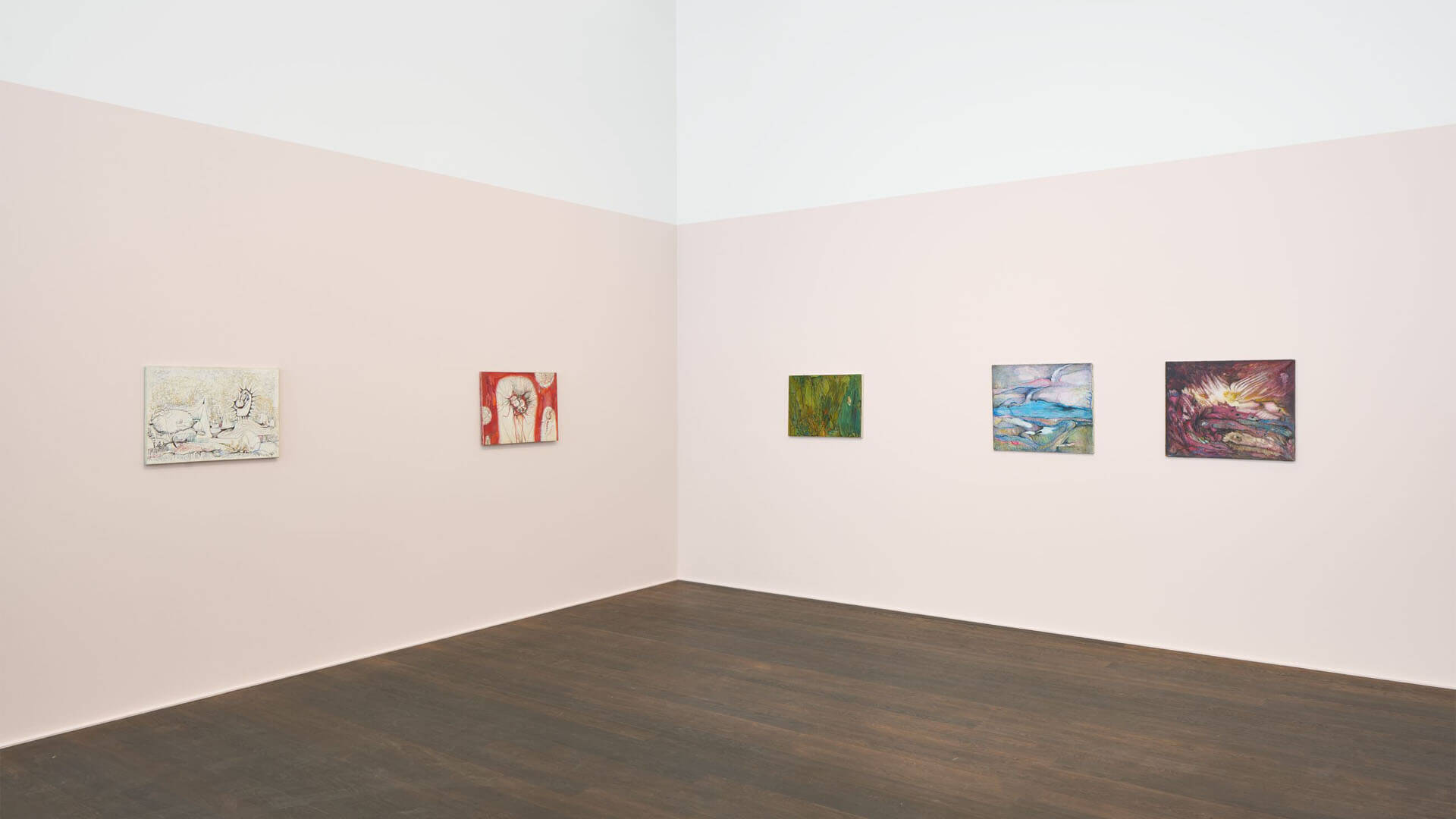
This work is particularly charged with personal meaning: it was made in 1968, a turbulent year for Polish Jews who had survived the Holocaust as many were forced to emigrate from Poland by the Communist government in an antisemitic purge. Rosenstein opted to stay in Poland, a painful scenario reflected in the sometimes-violent imagery that surfaced in her work of this period. These works are exemplary of the artist’s abstract practice in which biomorphic shapes undulate and pulse on the surface of the canvas. The forms often evoke bodily sensations of inner landscapes that belong to the mystical realm of the psyche. Often discussed in regard to their alchemical qualities, Rosenstein’s abstract landscapes are rooted in the unconscious mind and arouse otherworldly and cosmological allusions.
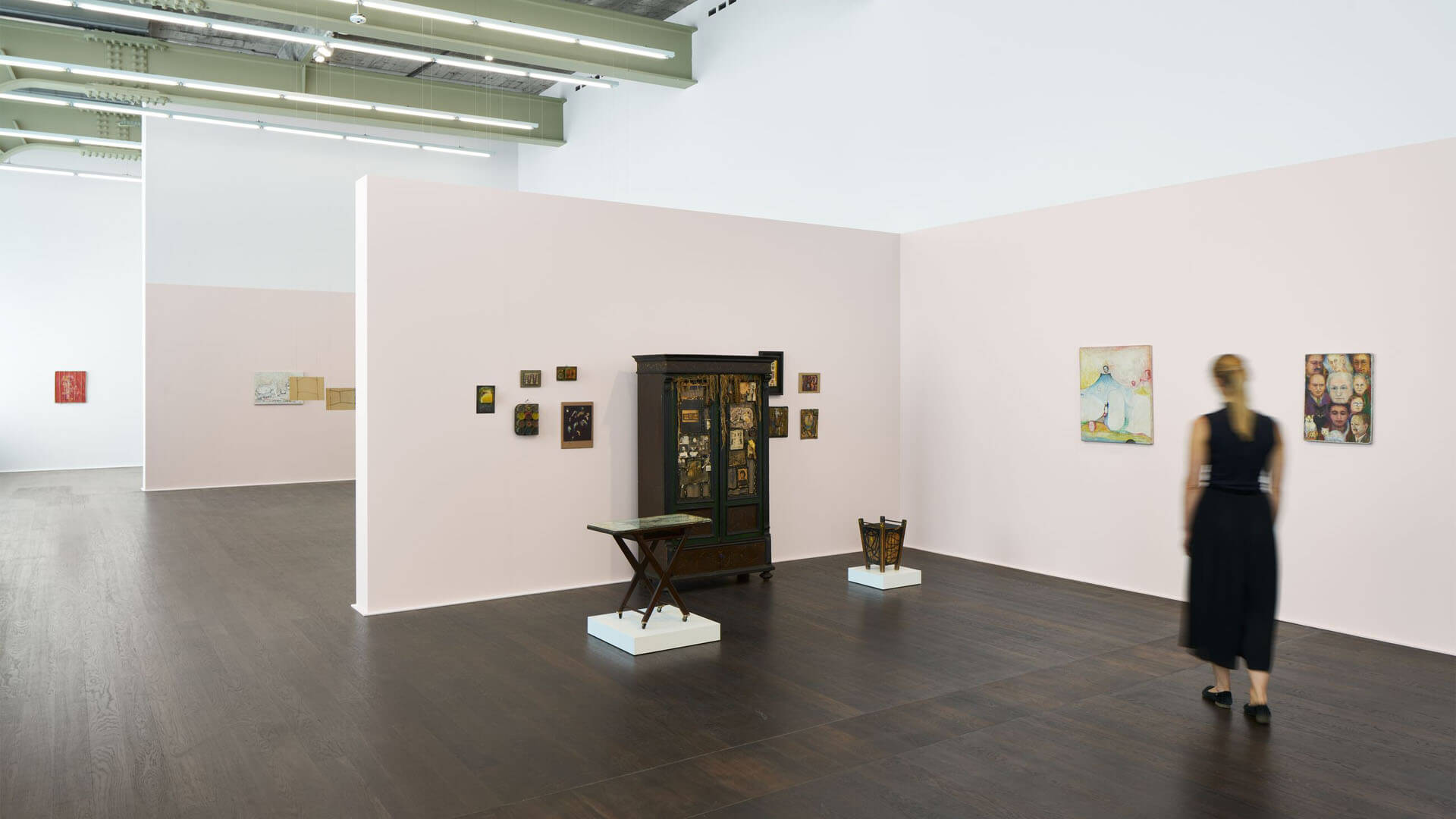
Also on display are Rosenstein’s deeply autobiographical paintings, shifting to the figurative side of the artist’s practice. Her parents’ murder during the Holocaust is a subject she returns to repeatedly in multiple drawings and paintings across the decades. She does not attempt to directly depict their brutal murder in realistic terms, instead transforming this primal scene into disconcerting, often magically tinted dreamscapes. Such a painting is ‘Osobna pora (Separate Season)’ (1971), depicting her mother Anna’s head floating in an abstract landscape. The apparition of Anna’s head recurs six times in this scene, yet her smiling face seems to both defy death and time as she exists suspended in the artist’s memory.
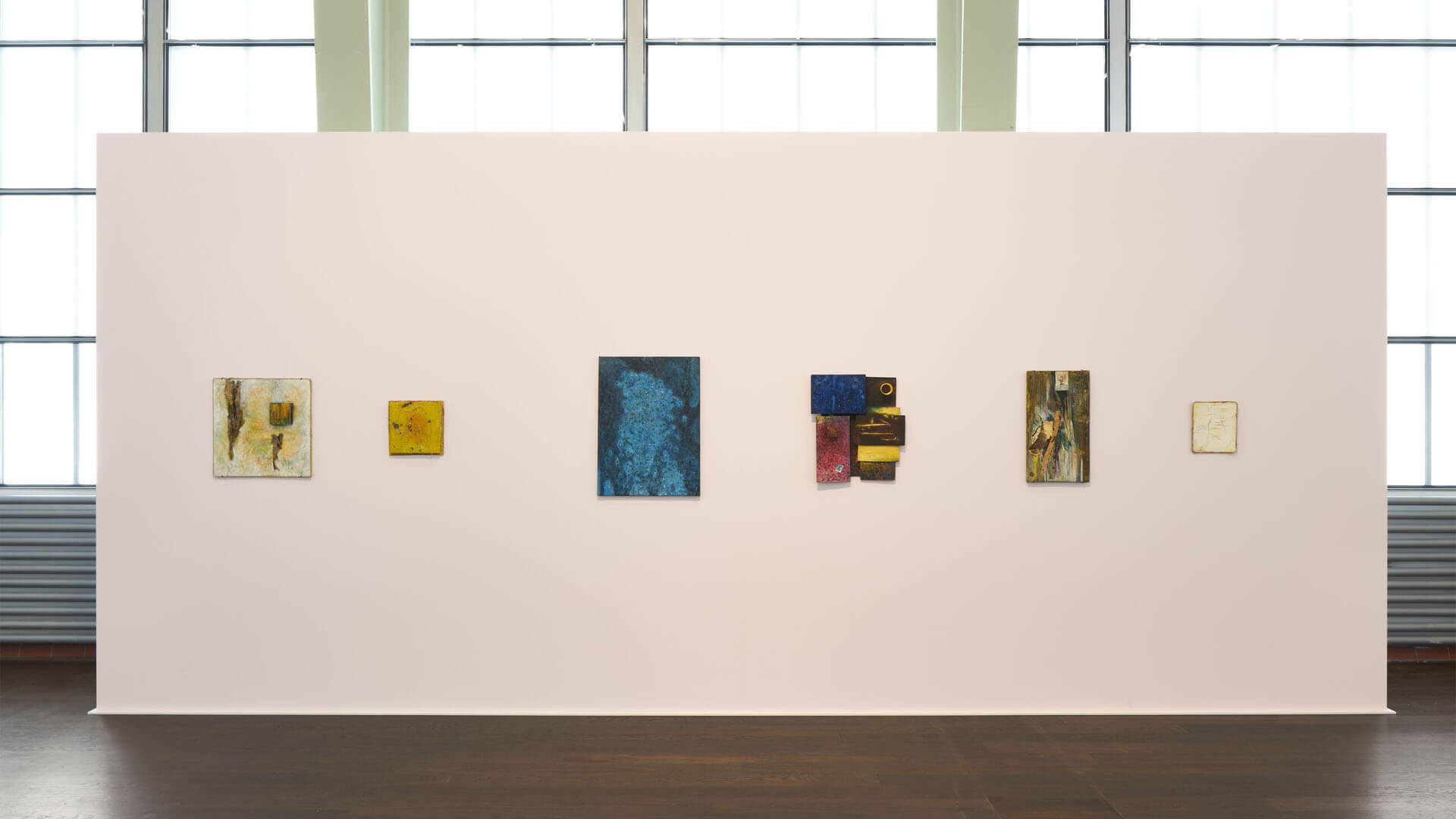
The traumatic loss of her parents is also the subject of ‘Bardzo Dawne (From Long Ago)’ (undated). This physically small yet monumentally important painting not only depicts the traumatic murder of Rosenstein’s parents, but it also suggests the fairy tale as the central form and conceptual core of her entire practice. This shift towards a more figurative style is shown in a selection of expressive drawings that span from the early 1970s to the 1990s. On view are a group of eight works on paper in their original authorial framing suspended from the ceiling, depicting dream-like imagery that has become a hallmark of her oeuvre.

‘Erna Rosenstein’ also presents a selection of untitled assemblage sculptures made by the artist during the early 1980s, a period of martial law in Poland when scarcity prevailed. These works—among them a waste basket, a cigarette pack with eyes and an old purse with teeth—transform the most humdrum bric-a-brac into the substance of art and oscillate between the figural and the abstract. They reflect the childlike and whimsical aspects of Rosenstein’s sublimating practice and echo the artist’s early Surrealist lexicon of expression. Rosenstein also applied her drawing practice to found objects, as seen in ‘Untitled’ (1973). Comprised of a coffee table from Rosenstein’s studio, ‘Untitled’ offers an insight into her dedicated practice which often led to the blurring of boundaries between life and art in her work.
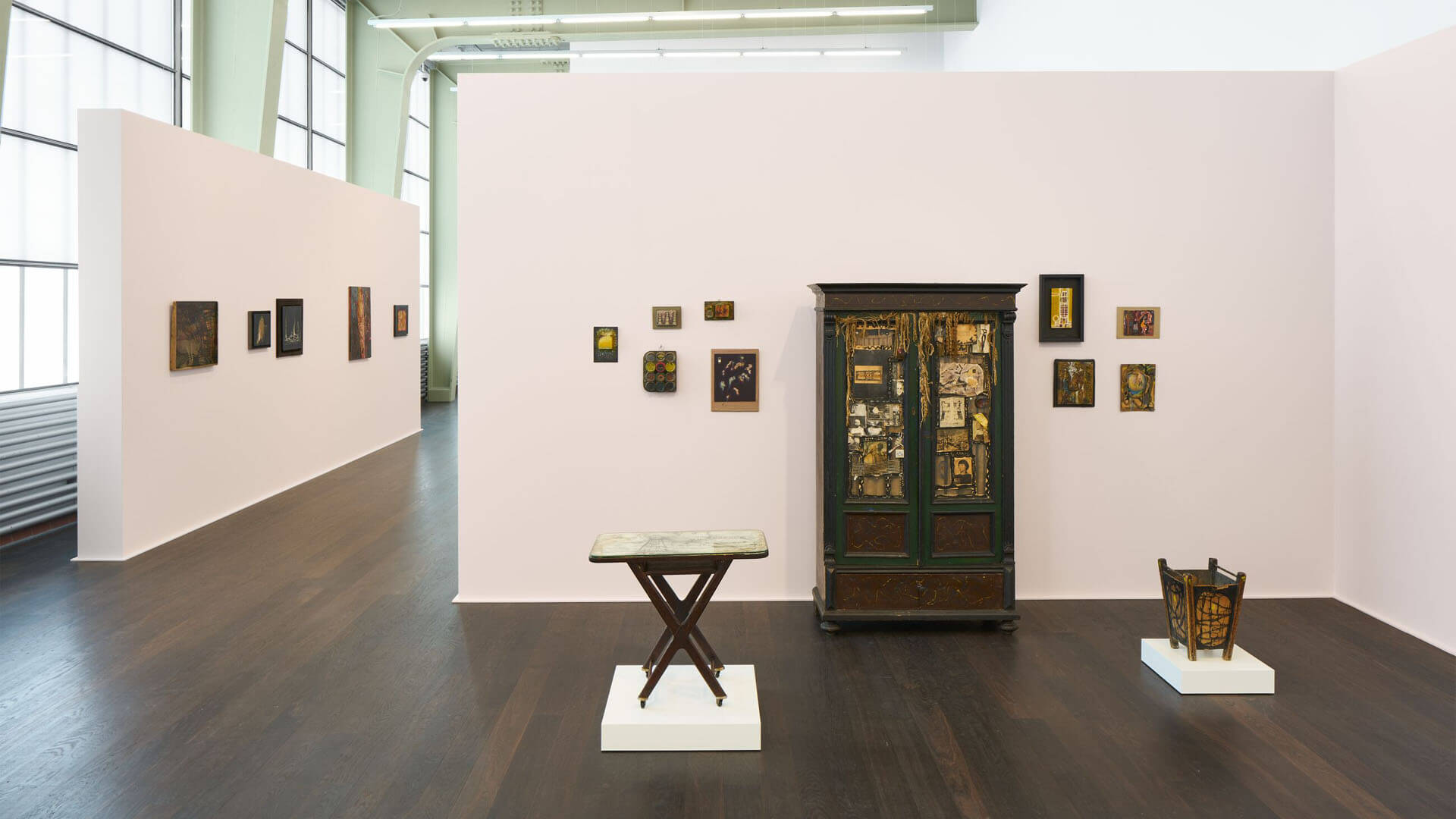
Rosenstein’s ‘Szafa (Cabinet)’ (ca. 1960 – 2004), an everyday cabinet, functioned as a piece of furniture in the artist’s home studio, housing her writings, sketchbooks and correspondence. A ‘cabinet of curiosities’ of sorts, it operated dually as a repository for her creative impulses: Rosenstein adorned the cabinet’s doors with personal references and trinkets, collecting collaged found objects, postcards, photographs and reproductions of Flemish paintings. Rosenstein’s writings coexisted alongside her visual artistic practice from as early as the 1940s when she began to publish children’s tales in Polish magazines. After the birth of her son in 1950, she commenced writing fairytales that, like her paintings, drew their narratives from the tension between magical realism and a bleak, pragmatic reality replete with loneliness and misfortune. Often, her writings become allegories of her own Polish Jewish experience with antisemitism.
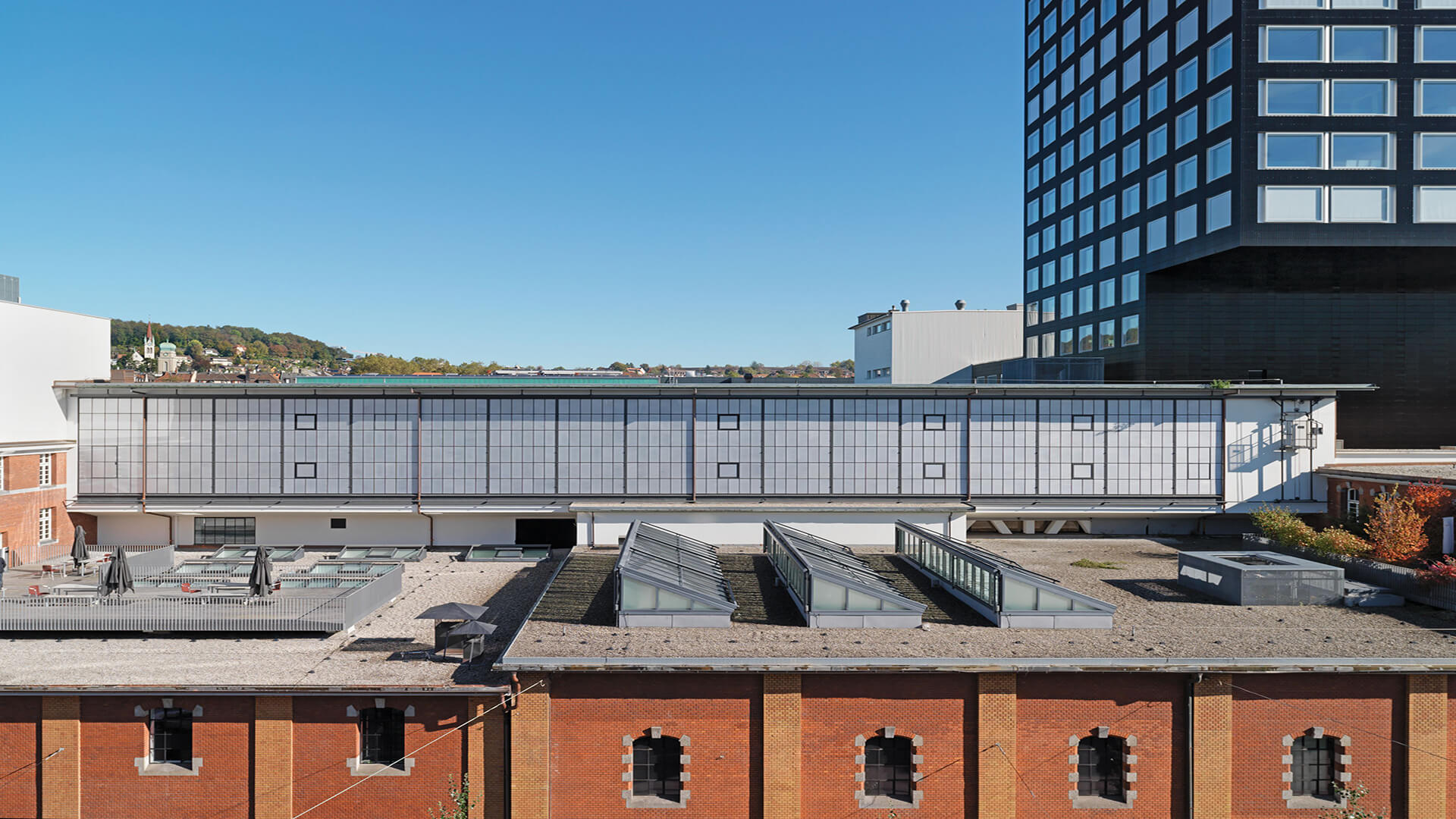
On view in Zurich, Limmatstrasse
The gallery is open Tue – Fri, 11 am – 6 pm and Sat, 11 am – 5 pm. Please visit our location page to plan your visit.
About the Artist
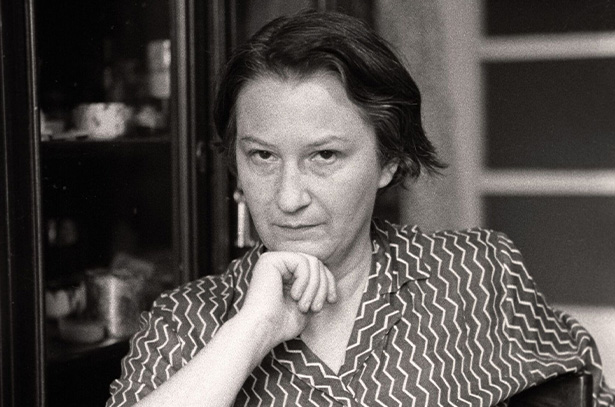
Erna Rosenstein
Born in 1913 in Lwów (now the Ukrainian city Lviv) and raised in Kraków, Erna Rosenstein emerged as part of the Polish avant-garde in the 1930s, associated with the Kraków Group. She studied at the Wiener Frauen Akademie in Vienna in 1932-1934 and then at the Academy of Fine Arts in Kraków between 1934-1937. She was part of a tight-knit circle whose artistic innovations were rooted in socially progressive left-leaning politics and who mobilized actions under the Communist Union of Polish Youth. As part of the Kraków Group, she identified with such fellow artists as Jonasz Stern, Jadwiga Maziarska, and especially, Tadeusz Kantor, whose underground experimental artistic and theater activities embraced Surrealism. In late 1937, prior to the outbreak of the Second World War, she spent several months in Paris where she saw the Exposition Internationale du Surréalisme (International Surrealist Exhibition) organized by André Breton and Paul Éluard. Passing through Germany on her way home to Poland, she also visited the Berlin edition of the Nazi Party’s notorious Degenerate Art Exhibition. These two shows made a profound impact upon Rosenstein’s early artistic ideas and undoubtedly influenced her storied career.
When war erupted and the Nazis invaded Poland in 1939, Rosenstein returned with her family to Lwów. They spent two years living in the Soviet occupied city, which provided less hostile conditions for Jewish families; there Rosenstein joined the Association of Artists. When Lwów was seized by the German army in 1941, the artist and her mother moved to the Jewish ghetto while her father went into hiding. The family acquired false identity papers in 1942, and escaped the ghetto to flee toward Warsaw. The horrifying events that followed would haunt the imagery and themes Rosenstein explored in her work for the ensuing five decades—in the process of the family’s sojourn, Rosenstein witnessed the brutal murder of her parents in a forest in the middle of the night. Wounded but able to escape, she survived the next three years of the war by living under false identities, changing the whereabouts of her lodging in Warsaw, and ultimately hiding in the small rural town of Częstochowa until the war’s end. While Rosenstein produced artworks in the prewar period, nothing survived the war. She resumed painting in 1945, and, in the years that followed, joined the Polish Workers’ Party, became a member of the Association of Polish Artists and Designers (ZPAP) and the Young Artists Group, and exhibited her work in the National Modern Art Exhibition in Kraków (1948 – 1949). In 1947 and 1948, she traveled to Switzerland, England and Paris, where she saw a series of Surrealist exhibitions. While in Paris, she met her future husband, the literary critic and translator Artur Sandauer, with whom she eventually settled in Warsaw. Together they had a son, Adam Sandauer.
During the Socialist Realist period, between 1949 and 1955, Rosenstein withdrew from official artistic life; defying the communist-imposed artistic doctrine, she worked outside the mainstream art world. In 1955, she became one of the nine artists who reactivated the Kraków Group, staging the first modern art exhibition of the post-Stalin ‘thaw’ era. Her first solo exhibition was held in Warsaw in 1958 at the Kzywe Koło Gallery of Modern Art, run at the time by Marian Bogusz, a fellow artist and apostle of modernity. She came into prominence with a 1967 monographic exhibition at the Zachęta in Warsaw, a presentation designed by Tadeusz Kantor and inspired by the design of Surrealist exhibitions. She then participated in numerous national and international exhibitions such as the Golden Grape Symposiums in Zielona Góra and took part in Kantor’s happenings ‘Cricotage’ (1965) and ‘Panoramic Sea Happening’ (1967). In 1976, she was awarded the prestigious Cyprian Kamil Norwid Art Critics Award, and in 1996, the Jan Cybis Prize, Poland’s most respected artistic distinction.
Erna Rosenstein was an author of paintings, assemblages, drawings, objects, and artist books. She published seven volumes of poetry, among others Ślad (Trace) in 1972 and Spoza granic mowy (From Beyond the Edges of Speech) in 1976. She died on November 10, 2004 in Warsaw. Her works are in the collections of majors Polish and international collections such as the National Museums in Warsaw, Wrocław and Kraków as well as the Muzeum Sztuji in Łódź. Recent international presentations of Rosenstein’s works include Unorthodox at The Jewish Museum in New York (2016), documenta 14 in Athens and Kassel (2017), and the travelling exhibition Surrealism Beyond Borders at The Metropolitan Museum of Art in New York and Tate Modern in London (2021-2022).
Inquire about available works by Erna Rosenstein
On view now through 14 January 2023 at Hauser & Wirth Zurich, Limmatstrasse.
Current Exhibitions
1 / 12

